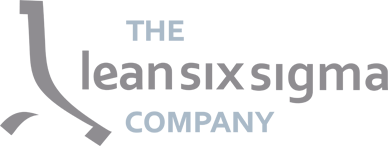Lean Thinking, as it is identified as “zeroing in on conveying the most incentive from a customers’ viewpoint, while eliminating waste and completely using the aptitudes and information on those accomplishing the work”. These are altogether applicable objectives for the present Project Management (PM) and the explanation that undeniably associations are utilizing Lean Thinking to help esteem and reduce waste in the PM.
Lean Thinking typifies a wide scope of standards and strategies. It can be a way of thinking in addition to a tool compartment of procedures. For this article, we consider applying some fundamental standards for delivering values and reducing waste to avoid within the PM.
Lean thinking principles and Project Management
Lean Thinking recommends five standards as starting points for a constant pattern of delivery and improvement. Let’s dig into individually and perceive how a PM can embody the ideas they speak to:
Determine what makes an incentive from the client – This guideline takes the “Client Defines Value” topic we just discussed and prepares it directly into the initial step of the cycle. PM’s comprehend they serve various customers, commonly including their sponsoring group who pays to set up PM’s.
Incentive for the PM sponsoring group probably incorporates assisting projects with being effective, ensuring good practices are followed, providing objective evaluation of performance and risk signs, giving assistance/preparing where required, and so on. Group of customers is the project’s groups and group leads/managers. These clients ordinarily need low overheads for PMO consistency and convenient reactions to demands, training, etc.
Distinguish all steps – value adding and non-value adding over the entire value stream that brings a product and service to the customers – This is the way toward analyzing how things actually operate to complete work. A few exercises are fundamental value adding tasks, for example, performing review, while others will be non-value adding activities, such as waiting for the feedback.
Lean thinking provides tools, for example, Value-Stream-Mapping to dissect measures and order value adding and non-value adding tasks. It additionally permits us to figure measurements like process duration and process proficiency. Utilizing these tools to take a gander at the present status and future-conditions of PM measures, the group can examine and upgrade how to best convey value.
Build up stream – The consistent development of products, services and data from start to end through the process. Building up stream improves proficiency, quality and the capacity to manage changes. PM’s can uphold this by empowering the little batch flow of customer’s stories and reviews versus specification documents project lessons learned reports.
Execute Pull method –Stock piling products or service offerings ready for consumption or with the expectation that they are consumed is inefficient. It consumes time and energy with in-progress work that has not yet conveyed value and frequently individuals will need something marginally unique.
PM’s can grasp lean thinking by giving in to the Just of time instead of standard status appraisals. They can likewise make, say, contract layouts dependent on project qualities not standard, additionally Steering Committee updates based on current inquiries not standard formats.
Work flawlessly – The objective is the complete elimination of waste with the goal that all activities create value for the customers by continuous improvement. While flawlessness might be inaccessible, the objective of this standard is to ingrain the possibility that improvement is a continuous process that doesn’t stop. Individuals should always encourage improving the delivery of value.
Conclusion
Lean thinking focuses on serving customers by adding value and eliminating waste, which is all around lined up with PM objectives too. PM’s can gain parts from applying lean thinking standards to not just increment the estimation of the activities they uphold, yet additionally increment the estimation of the group itself.




To improve the usability of our website we use cookies.
More Information Close